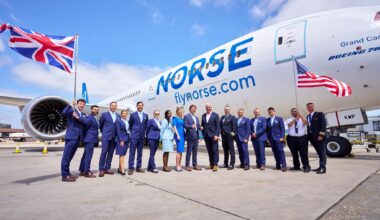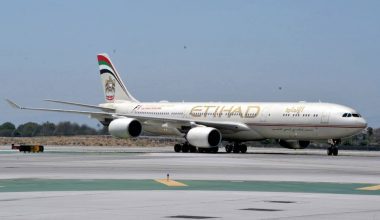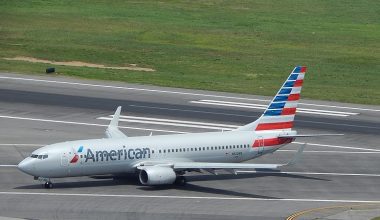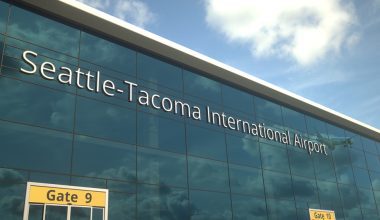Nearly six decades have passed since the first Boeing 727 took to the skies on February 9, 1963. The narrow-body jet airliner Boeing 727 is the only trijet manufactured by the US aerospace giant Boeing, explicitly designed to serve smaller airports with shorter runways. Once Boeing kick-started the jet age for US commercial aviation by introducing the masterpiece quad-jet Boeing 707 in the late 1950s, it shifted its attention to serving short and mid-range passenger markets by developing suitable jets.
The iconic Boeing 727 not only carried on the heritage of its forerunner B707 gracefully but created its brand as the versatile and one of the greatest selling commercial jets in history. The year 2019 marked the end of an era for Boeing 727 when its last commercial passenger flight flew on the Zahedan-Tehran route. How did Boeing 727 become the best-selling passenger aircraft of its time, and why did it disappear from the aviation landscape after only five decades of service? Here’s a detailed story on the rise and fall of the iconic trijet Boeing 727.

Boeing 727 aircraft- a risky proposition
Since the aviation industry ushered in the era of glorious jet travel, the need for a short-haul aircraft was apparent. The major US airlines like American Airlines, United Airlines, and Eastern Air Lines were looking for jet airliners that could cater to small, shorter-runway high-altitude airports with fewer passengers. As a response, Boeing came up with the B727 design, which faced conflicting customer demands. While United wanted four-engine aircraft, American Airlines requested efficient twin-engine airliners. To meet the halfway needs of its customers and keep them happy, Boeing announced the three-engine Boeing 727 on December 5, 1960.
The 727 was a risky proposition for Boeing Commercial Airplanes as the company was still grappling with the production costs of long-range B707s, and working on a new commercial plane for a smaller-demand market meant competing widely against similar-purpose aircraft of domestic companies like Lockheed, Convair, Douglas, and overseas competitors like de Havilland Trident, Sud Aviation Caravelle, etc.
Rise of Boeing 727
Despite several setbacks, Boeing rolled out its first B727-100 in November 1962 with a lemon-yellow and copper-brown livery similar to that of Dash 80. Powered by a trio of rear-mounted Pratt & Whitney JT8D low-bypass engines, the carrier made its maiden flight on February 9, 1963, and entered revenue service with Eastern Air Lines on February 1, 1964.
Of all former Boeing jets, B727 was highly distinctive with three engines and a high T-tail design and was skillfully designed to outshine its competitors. Its tri, rear-mounted engines allowed operators to operate frequently from short, unimproved airfields while still having the range to serve transoceanic routes. The innovative high-lift system of triple-slotted trailing edge flaps, inboard, and leading-edge outboard flaps on the wings gave the 727 ability to land on shorter runways and provided extra lift at low speeds.
The cutting-edge design of the 727 also included a small gas-turbine engine auxiliary power unit (APU) mounted in the central landing gear bay that removed the need for a ground-based power supply and allowed electrical and air-conditioning systems to run independently.
Boeing 727 had a slow start with only 40 orders at the time of its announcement in 1960, and even by its maiden flight in 1963, the aircraft order book was still not filled and couldn’t reach the estimated break-even point of 200. To help increase the sales figure, Boeing 727 accomplished a 76,000-mile tour of 26 countries, and soon after, the orders for the 727 went off the roof. The reliability, versatility, and efficiency of the 727s finally started paying off, and it formed the backbone of fleets of many new carriers.

The introduction of the larger 189-seat 727-200 model in 1967 further spurred the sales of the aircraft. As the aircraft evolved, it was equipped with more powerful engines and featured higher gross weights along with other improvements. B727 proved efficient for airports with gravel or lightly improved runways, and airlines deployed the 727 for domestic flights of medium range and short-to medium-range international flights in destinations worldwide.
How did Boeing 727 become one of the best-selling commercial jets?
Once touted as a risky project, Boeing 727 became a magnificent commercial gamble for the US manufacturer because it became the first commercial aircraft to crack the 1000-sales mark. Its production ran higher than any other aircraft for over a decade. For nearly two decades, B727 was in the league of its own with no direct rivals to outclass its functional and sales performance.
Initially, Boeing anticipated producing 250 units to cross the break-even point and make the 727 a success. However, as an outstanding flying machine, it soon fitted in nicely with airlines’ operations and became popular with passengers. With a 22-year production run, Boeing 727 far exceeded its original target and became the best-selling aircraft of its time. As time passed, the success of the commercial airliner 727 spilled over to cargo and military sectors such as 727-100 Convertible, 727-100Quick Change, 727-100Quiet Freighter, 727-200Convertible, 727-200F Advanced, etc.
Starting from1962 until1984, Boeing built 1,832 B727s, which was the highest total for any jetliner until the next generation of Boeing 737 broke the record and surpassed the sales figure in the early 1990s.
The immense popularity of the Boeing 727 can be attributed to its forward-looking technology and design. To meet the customer demand for shorter flights to/from smaller airports, Boeing 727 incorporated sophisticated and cutting-edge technological features and procedure, which allowed the airliner to perform its job excellently.

The mid-size B727 was aimed at smaller airports with poor ground facilities and short runways unable to handle the larger 107 jets. Boeing was able to create a good fit in the short-and medium-haul market by designing low-altitude, great-range Boeing 727. Its short runway performance and high-speed cruising capability allowed carriers to ferry passengers from large-population, smaller-airport cities to worldwide tourist destinations. From cross-country flights to frequent, short hops with smaller runways, Boeing 727 was capable of transporting passengers on everything.
The fall of Boeing 727 over time
In the mid-1980s, when Boeing ceased the production of B727s, many 727 customers shifted their attention to a newer generation of Boeing aircraft, which featured modern wings and engines to give the best fuel mileage of any standard-body airliner at the time. With the rise of single-aisle twin-engine jet competitors, the tri-jet B727 became obsolete as carriers opted for better economics for the plane. The same trio of engines that made 727s versatile became a hurdle as newer fuel-efficient rivals appeared on the scene.
At the turn of the century, only a few airlines kept the aging fleet of 727s in service. Soon, carriers started phasing out 727s from frontline service in favor of the latest, fuel-efficient planes built at the forefront of leading technology. The downturn in travel and economic activity following the 9/11 terrorist attack, outraging fuel prices, increasing restrictions on airport noise, and high operating costs all contributed to the downfall of Boeing 727s.

The US Noise Control Act of 1972 levied Boeing 727 as one of the noisiest commercial jets since its Pratt & Whitney JT8D engines used older low-bypass turbofan technology. The 727 was categorized as a Stage 2 noise jetliner and was required to be retrofitted with a hush kit to meet the Stage 3 noise requirements. Since December 31, 1999, it has been mandatory for 727 operators to reduce the engine noise to Stage 3 levels to criss-cross US airspace.
Another reason for the fall of Boeing 727 is the extra expense of paying flight engineers’ salaries. While modern airliners have a smaller flight deck crew with computerized systems and two pilots, the 727 required a three-person flight deck, including a flight engineer on board to monitor the aircraft systems. Having an extra person to come along in the cockpit contributed to high operating expenses for the 727.
It was the end of an era for Boeing’s famous trijet 727 in January 2019 when the jet made its last commercial flight on a domestic Iranian route. The 727 eras ended even earlier in the US when Delta retired its previous 727 from scheduled service in April 2003 as a part of its simplifications efforts.
Are there any Boeing 727 still flying?
Boeing 727 no longer leads a life as a passenger airliner, but a handful of 727s are in limited service for freighter and executive use. Serve Air Cargo of the Democratic Republic of Congo (DRC) touts a humble fleet of five 727s positioned to fill a specific gap in the short-haul domestic freight transportation market. Likewise, the total Linhas Aereas and Kalitta Charters have three and four active 727s, respectively. Currently, the active 727s belong primarily to freighter models; 28 out of 38 Boeing 727s still flying are freighters.






